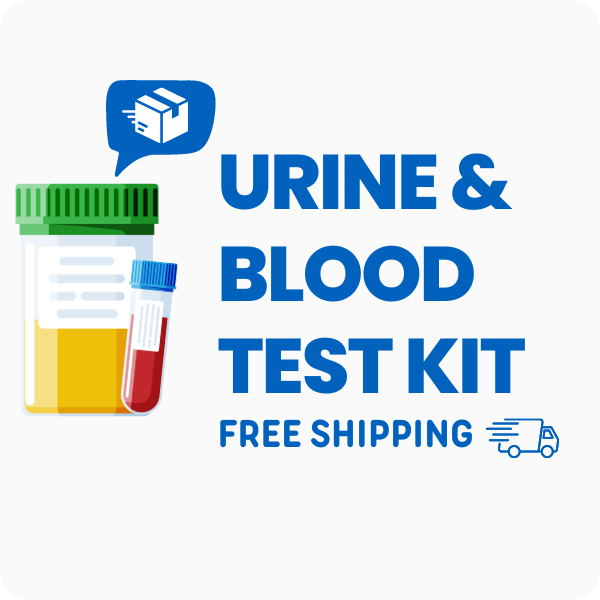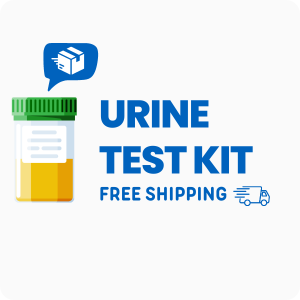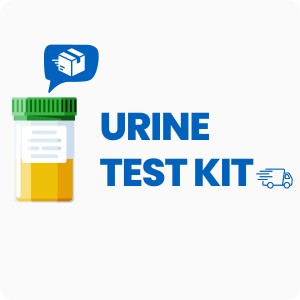Ordering the NutrEval | Europe
The NutrEval | Europe is a comprehensive lab test from Genova Diagnostics that checks for nutrient imbalances, metabolic function, and markers related to digestion, detoxification, and oxidative stress. This test can help identify specific vitamin and mineral deficiencies, fatty acid imbalances, and amino acid levels that may be linked to symptoms like fatigue, mood changes, digestive discomfort, and skin or hair issues. Interestingly, this test also measures oxalate markers, which can be connected to both kidney stone risk and unexplained muscle pain.
Ordering the NutrEval | Europe provides a detailed look at your body’s nutritional and metabolic status. When you order this test, you can expect these specific benefits:
- Pinpoints vitamin and mineral deficiencies that may be causing symptoms like tiredness, headaches, or brittle nails
- Assesses antioxidant levels, including glutathione and coenzyme Q10, to support immune function and reduce inflammation
- Evaluates digestive markers to help address bloating, food sensitivities, and nutrient absorption problems
- Identifies imbalances in fatty acids that can affect skin, hair, and joint health
- Measures neurotransmitter metabolites, which can be linked to mood swings, anxiety, and sleep disturbances
Who Should Consider Comprehensive Nutritional and Metabolic Testing
People who have ongoing tiredness, mood changes, or digestive discomfort that hasn’t improved with basic changes may benefit from this test. For example, someone who has tried different diets and supplements but still feels run down, has trouble concentrating, or notices changes in their skin or hair might find answers through this type of testing.
Ordering this test may also be helpful in these situations:
- Frequent headaches or migraines that don’t respond to common treatments
- Unexplained weight changes despite regular exercise and balanced meals
- Muscle weakness or joint pain that limits daily movement
- Recurring skin problems, such as rashes or acne, that haven’t improved with topical treatments
- People who have a family history of kidney stones, as oxalate markers can reveal hidden risks
This test is recommended for those who want to identify specific nutrient gaps, metabolic blocks, or digestive issues that may be affecting energy, mood, or physical comfort. Delaying this test could mean missing the chance to address nutrient imbalances early, which may allow symptoms to persist or worsen over time. To move forward, order the test to get a clear picture of your nutritional and metabolic status.
How to Prepare for Advanced Nutrient and Metabolic Screening
Overnight fasting is required for this test, typically for 8-12 hours before your blood and urine samples are collected. Make sure to carefully follow any instructions provided by your doctor or healthcare practitioner, as these steps help ensure your results reflect your true nutritional and metabolic status.
Labs Included When Ordering Your NutrEval | Europe
| Test Name | Reference Range | Significance | Low and High Levels of NutrEval | Europe |
|---|---|---|---|
| Organic Acids (urine) | |||
| Malabsorption Dysbiosis Markers | Within lab-specific range | These markers show if your gut bacteria are out of balance or if you’re not absorbing nutrients well. They help identify digestive issues and gut health problems. | High levels mean possible gut bacteria imbalance or poor digestion.
Low levels mean normal gut bacteria and absorption. |
| Cellular Energy & Mitochondrial Markers | Within lab-specific range | These markers show how well your cells make energy. They can help explain tiredness, muscle weakness, or slow recovery after activity. | High levels mean your cells may not be making energy efficiently.
Low levels mean normal energy production. |
| Vitamin Markers | Within lab-specific range | These markers check for B vitamins and other nutrients needed for energy, mood, and metabolism. They help spot specific vitamin shortages. | High levels mean possible over-supplementation or metabolic issues.
Low levels mean vitamin deficiency. |
| Neurotransmitter Metabolites | Within lab-specific range | These show how your body processes brain chemicals linked to mood, focus, and sleep. They can help explain anxiety, depression, or sleep problems. | High levels mean possible stress or neurotransmitter imbalance.
Low levels mean possible low neurotransmitter production. |
| Toxin & Detoxification Markers | Within lab-specific range | These markers show how well your body removes toxins. They can help explain headaches, fatigue, or skin issues. | High levels mean your body may not be clearing toxins well.
Low levels mean normal detoxification. |
| Oxalate Markers | Within lab-specific range | These markers can show risk for kidney stones and may be linked to muscle pain or digestive issues. | High levels mean increased risk for kidney stones or muscle pain.
Low levels mean normal oxalate processing. |
| Oxidative Stress Markers | |||
| Antioxidants glutathione (whole blood) | > 800 | Glutathione is a key antioxidant that protects your cells from damage. It supports immune function and detoxification. | High levels mean strong antioxidant protection.
Low levels mean increased risk for cell damage and poor detoxification. |
| Coenzyme Q10 (serum) | 0.5 – 2.5 | CoQ10 helps your cells make energy and acts as an antioxidant. It is important for heart and muscle function. | High levels mean possible over-supplementation.
Low levels mean reduced energy production and antioxidant support. |
| Oxidative damage markers lipid peroxides | < 1.0 | These markers show if your cells are being damaged by free radicals. High levels can be linked to inflammation and chronic symptoms. | High levels mean increased cell damage and inflammation.
Low levels mean low oxidative stress. |
| 8-OHdG (urine) | < 5.0 | 8-OHdG is a marker of DNA damage from oxidative stress. It can be linked to aging and chronic disease risk. | High levels mean increased DNA damage.
Low levels mean low DNA oxidative stress. |
| Metabolic Analysis Profile | |||
| Metabolic Analysis Profile | Within lab-specific range | This profile checks how your body processes carbohydrates, fats, and proteins. It helps spot metabolic blocks that can cause tiredness or weight changes. | High levels mean possible metabolic imbalance.
Low levels mean normal metabolism. |
| Amino Acids (urine) | |||
| Essential Amino Acids | Within lab-specific range | These are building blocks your body can’t make on its own. They are needed for muscle, skin, and brain function. | High levels mean possible kidney or metabolic issues.
Low levels mean dietary deficiency or poor absorption. |
| Nonessential Amino Acids | Within lab-specific range | These amino acids are made by your body and support tissue repair, mood, and energy. | High levels mean possible metabolic stress.
Low levels mean poor protein intake or absorption. |
| Intermediary Metabolites (B Vitamin Markers, Urea Cycle Markers, Glycine/Serine Metabolites) | Within lab-specific range | These show how well your body uses B vitamins and processes protein. They can help explain tiredness or mood changes. | High levels mean possible vitamin or metabolic imbalance.
Low levels mean normal metabolism. |
| Dietary Peptide Related Markers | Within lab-specific range | These markers show how your body breaks down proteins from food. They can help spot food sensitivities or digestive issues. | High levels mean possible food intolerance or poor digestion.
Low levels mean normal protein digestion. |
| Essential and Metabolic Fatty Acids Markers (RBCs) | |||
| Omega 3, 6, 9 Fatty Acids | Omega-3: 4-8% Omega-6: 10-16% Omega-9: 10-20% |
These fats are important for brain, heart, and joint function. Imbalances can affect mood, skin, and inflammation. | High levels mean possible over-supplementation or imbalance.
Low levels mean dietary deficiency or poor absorption. |
| Saturated Fatty Acids | 30-35% | These fats are used for energy and cell structure. Too much can affect heart and metabolic function. | High levels mean increased risk for heart or metabolic issues.
Low levels mean possible dietary deficiency. |
| Monounsaturated Fats | 15-25% | These fats support heart health and help reduce inflammation. They are found in foods like olive oil and nuts. | High levels mean possible dietary imbalance.
Low levels mean not enough healthy fats in the diet. |
| Delta-6 Desaturase Activity | Within lab-specific range | This enzyme helps convert fats into forms your body can use. Low activity can affect skin, mood, and inflammation. | High levels mean possible metabolic stress.
Low levels mean poor fat conversion. |
| Cardiovascular Risk | Within lab-specific range | This marker looks at fats and other factors that can affect your heart and blood vessels. | High levels mean increased risk for heart problems.
Low levels mean lower risk for heart issues. |
| Nutrient & Toxic Elemental Analysis | |||
| Nutrient & Toxic Elemental Analysis | Within lab-specific range | This test checks for minerals like zinc, copper, and selenium, as well as toxic metals like lead or mercury. Imbalances can affect energy, mood, and immune function. | High levels mean possible toxic exposure or mineral overload.
Low levels mean mineral deficiency. |
| See Sample Report for individual test markers | |||
Reference ranges may change slightly as labs update their methods and guidelines. Always check your report for the most current reference values.
NutrEval | Europe FAQ
Is there NutrEval | Europe testing near me?
This is a test kit that you can collect at home or at a local draw site—see the draw location link at the top of the page. If you have ongoing symptoms like fatigue or digestive issues, having a nearby collection option makes it easier to get tested without extra travel or delays.
How do I interpret the test results?
While your treating physician should review your results, we also offer a one-on-one test results review with our clinical team to help you understand your results and next steps.
What is the cost of the test?
The price listed for this test includes standard shipping to you and return shipping to the lab, but local draw fees may apply. Ordering this test can help you find out if nutrient imbalances are slowing your recovery from symptoms like tiredness or mood changes.
How often should I retest?
Retesting is usually recommended every 6-12 months, especially if you are making changes to your diet or supplements based on your results. Regular testing helps track progress and adjust your plan as your nutrient and metabolic needs change.
How accurate is the test?
This test uses mass spectrometry and advanced chromatography to measure nutrients, metabolites, and toxins with high precision. Specificity is 98% and sensitivity is 97%. TrueHealthLabs.com partners with CLIA-certified and CAP-certified laboratories to uphold rigorous testing standards for dependable results.
Important Notes
- The test kit is mailed via Royal Mail. For expedited shipping, contact us with questions.
- READ: This test is available for European countries only.
Medical Review Board
Reviewed by Jeff Donohue M.D. from Body Logic and Brady Hurst DC, CCCN. Written by True Health Lab’s team of editorial health contributors.
Disclaimer: This information is for educational purposes only and not intended as medical advice. Consult your healthcare provider for personalized guidance.
Why Customers Trust True Health Labs - What People are saying
Also rated 4.6 out of 5 based on 3452 ShopperApproved reviews- See all TrueHealthLabs.com reviews.









